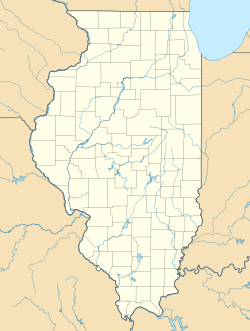Denkmann-Hauberg House facts for kids
Quick facts for kids |
|
|
Denkmann-Hauberg House
|
|
 |
|
| Location | 1300 24th St. Rock Island, Illinois |
|---|---|
| Area | 10-acre (4.0 ha) |
| Built | 1909-1911 |
| Architect | Robert C. Spencer Jens Jensen |
| Architectural style | Late 19th and early 20th century American Movements |
| NRHP reference No. | 72000466 |
| Added to NRHP | December 26, 1972 |
The Denkmann-Hauberg House, also known as the Hauberg Estate, is a very old and important building. You can find it in Rock Island, Illinois, in the United States. This special house was added to the National Register of Historic Places in 1972. This means it's recognized as a place worth protecting because of its history and design.
Contents
A Historic Home: The Hauberg Family Story
This beautiful house was once the home of Susanne Christine Denkmann and John Henry Hauberg. They got married in 1911. After their honeymoon, they moved into this brand new house.
Who Were Susanne and John?
Susanne was the youngest daughter of Frederick Denkmann. He was a very successful businessman who helped start the Weyerhaeuser-Denkmann Lumber Company. Susanne used her wealth to help others. She started the West End Settlement, which offered homes and help to people who needed it. She also helped create the Rock Island YWCA and supported the Denkmann Memorial Library at Augustana College.
John Henry Hauberg was a historian. He loved learning about the past. He helped make Black Hawk's Watch Tower a state park in 1927. Many items from his personal collection are now part of the John Hauberg Museum of Native American Life at the park. John also spent time recording the stories of the first settlers in the area.
A Gift to the City
In 1956, the children of Susanne and John donated their family home to the city of Rock Island. They wanted it to be used as the Hauberg Civic Center. Today, it still serves the community.
What Makes This House Special? Architecture and Design
The Denkmann-Hauberg House is built in the Prairie style. This was a unique American design popular in the early 1900s. It was created by architect Robert C. Spencer. He was a friend of another famous architect, Frank Lloyd Wright. Spencer was known for mixing modern Prairie style with older design elements. For example, you can see half-timbering on this house, which looks like exposed wooden beams.
Nature's Touch: The Tulip and the Landscape
Mrs. Hauberg's favorite flower was the tulip. You can find tulip designs all over the house! They are in the stone, plaster, wood screens, light fixtures, and even the decorative tiles.
The famous Chicago landscape architect Jens Jensen designed the outdoor areas. He made the 10-acre (4.0 ha) property look like a natural Wisconsin woodland. You can still see parts of his design today. There's a winding path and a stone bridge on the west side of the house.




